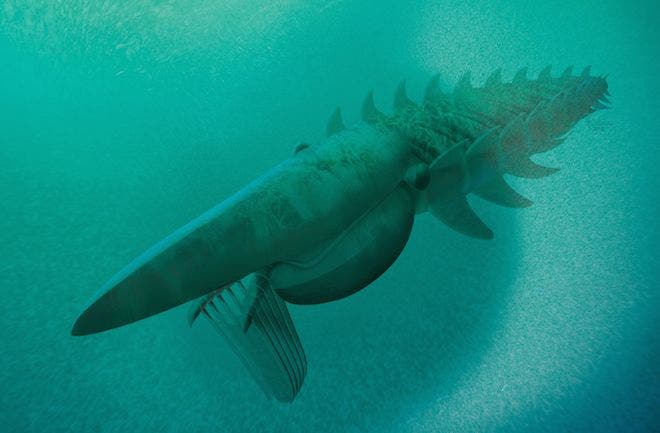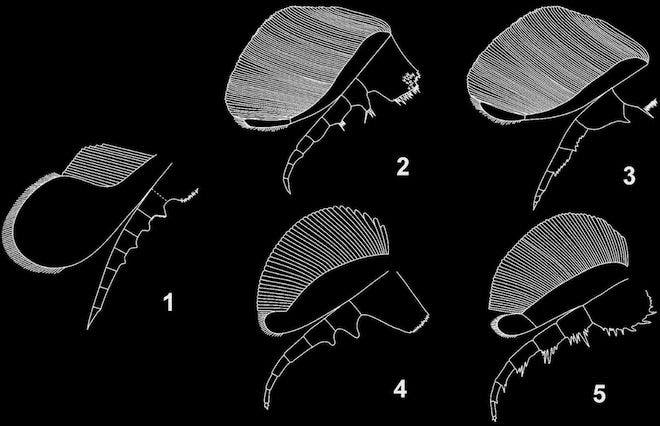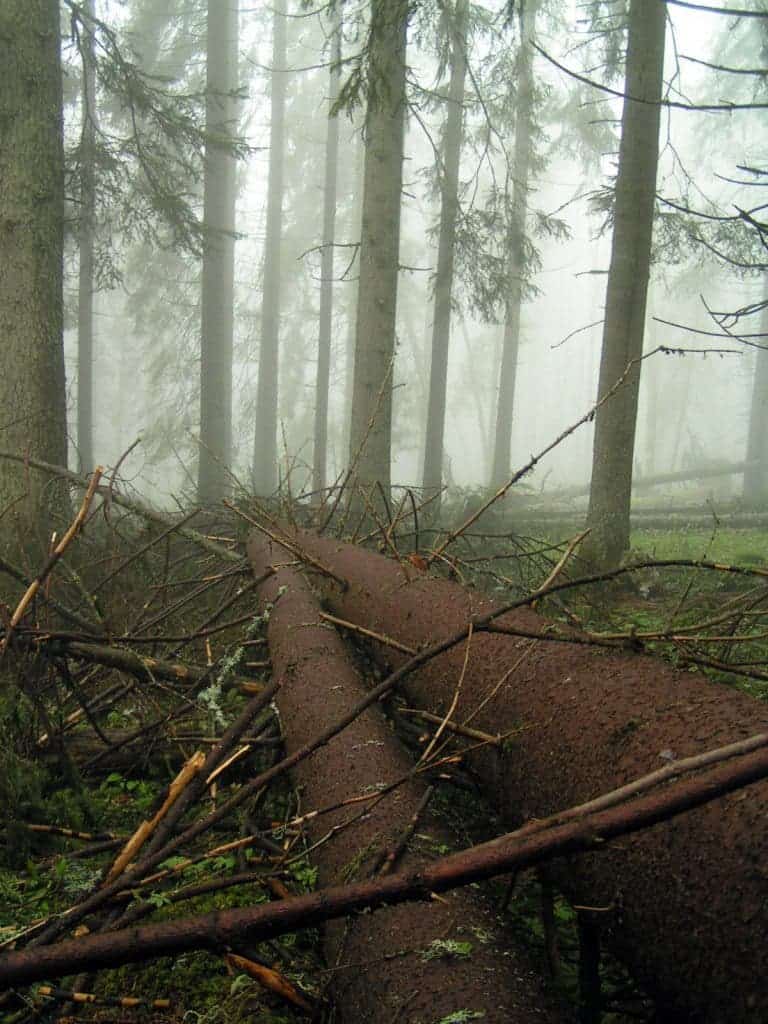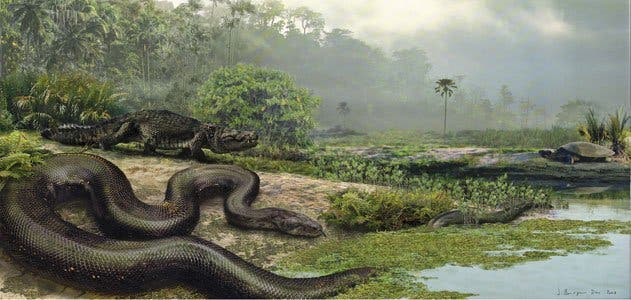Some 480 million years ago the seven-foot-long Aegirocassis benmoulae swam in a shallow sea covering what is today the Sahara desert. This giant arthropod, much larger than arthropods existing today, was likely the biggest creature in the world at the time, but despite its impressive appearance, it wasn’t a predator.
“It would have dwarfed anything else at the time, being twice as big as the next biggest animal — at the very least,” says Peter Van Roy, a paleontologist at Yale University and a co-author of a Nature study published today that contributes entirely new information about Aegirocassis benmoulae. “They were absolutely massive.”

Back in the Ordovician, the Earth looked very different than it does today. The Cambrian explosion was already over, and life was exploring all sorts of evolutionary niches – including giant arthropods. In fact, when researchers first found a fossil of Aegirocassis, they thought they were looking at several organisms – they assumed that the appendages were actually shrimps, the toothed mouths were jellyfish, and their complete bodies were actually described as sea cucumbers. But in 1985, a group of researchers figured it out – all the bits and pieces that paleontologists thought were several creatures were actually just one organism. But there were still many questions.
“Nevertheless, the affinities of anomalocaridids remained enigmatic: it would take almost another decade before they were finally recognized as arthropods,” Van Roy says.
Interestingly enough, it was a man with no formal training in paleontology that would shed light on these creatures – a local collector in Morocco by the name of Mohamed Ben Moula. To show his gratitude, Van Roy named the creature after him.
“With a big smile, he walks over to me and says, ‘you know, I have something to show you,’” Van Roy says. Ben Moula showed him a beautifully preserved appendage with “very delicate filter-feeding morphology; it had all these fine spines,” Van Roy says. “It was shocking.”
Despite its large size, Aegirocassis seems to have been fairly common. He and the Moroccan fossil collector went on to find dozens of preserved specimens in the Moroccan desert, and there are still thousands of full or fragmentary fossils in the area.

“They may have come together to molt, or they may have lived in a group,” he said. “It is interesting we found so many of them. It shows there was a well developed, rich plankton system in place 480 million years ago.”
But that doesn’t mean that there were no more surprises. The biggest one came in the form of flaps. Researchers had no idea that any anomalocaridids (the group to which Aegirocassis belong) had flaps.
“They were believed to lack limbs on the body.”
It might seem like a small matter, but the implications are actually huge: this is the missing link that explains how some crustaceans — like shrimp and lobsters — ended up with limbs that have two branches. These limbs are crucial to them, being involved in everything from gas exchange, to swimming, walking and grasping, and transferring sperm.

To make things even more interesting, it seems that despite being an arthropod, it actually had a surprisingly soft body.
“These extraordinary fossils are soft-bodied, which are typically very rare,” said John Paterson, an associate professor at the University of New England in Armidale, Australia, who was not involved in the study. “They require rapid burial and low oxygen conditions in order to be preserved in such exquisite detail.”
But for its impressive appearance and surprising developments, Aegirocassis was actually not a predator – he fed off of plankton.
“Given the huge size of Aegirocassis and its very alien appearance, I assume most people would probably be terrified if they’d encounter it while swimming,” said Van Roy. However, contrary to almost all other anomalocaridids which were active predators, our animal would have been a very peaceful guy.”
Journal Reference: Peter Van Roy, Allison C. Daley & Derek E. G. Briggs. Anomalocaridid trunk limb homology revealed by a giant filter-feeder with paired flaps. doi:10.1038/nature14256






